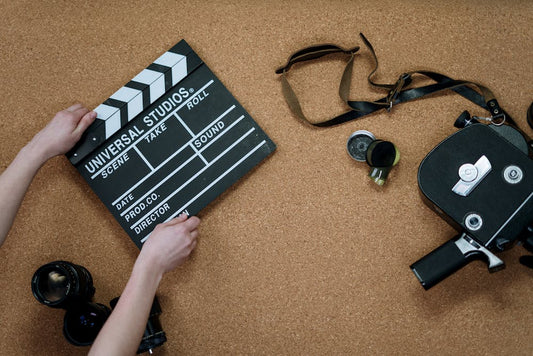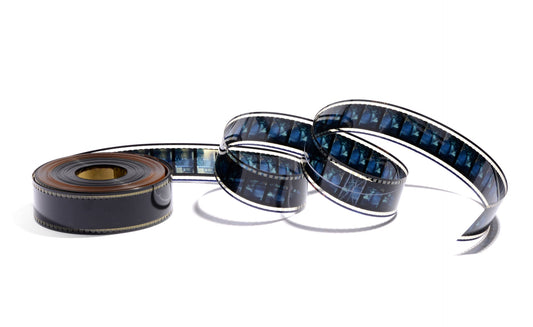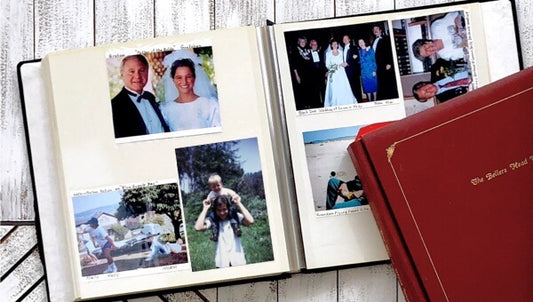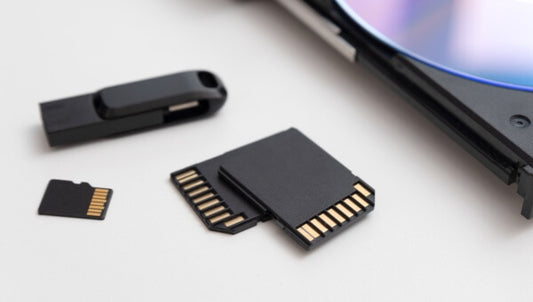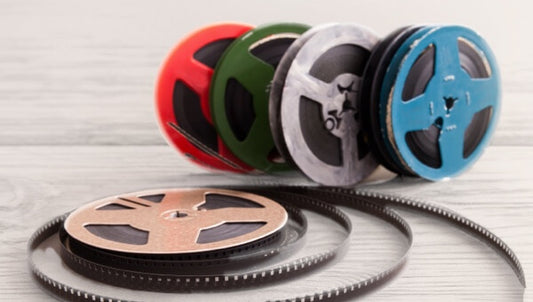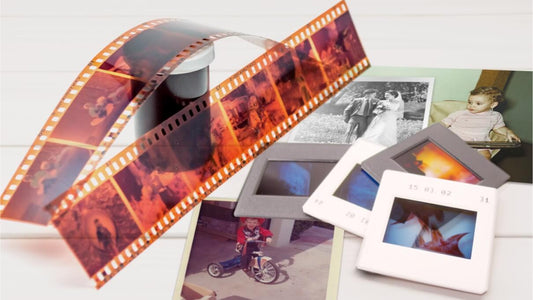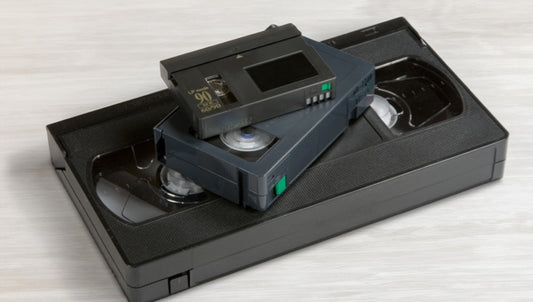If you’re new to photography or just have some slide film and negative film lying around, you might wonder what negative film is and how it’s different than positive film. It’s a crucial distinction for photo and film enthusiasts and photographers of all types.
That’s why the photo scanning experts at Capture put together this guide to help you understand negative and positive film. That way, you can figure out which one you should use, how to digitize it, or what type of film you already have.
Keep reading to learn about negative film, types of negative film, how it differs from positive film, the advantages of both types, and everything else you need to know about negative film.
Jump to:
- What is Negative Film
- How Does Negative Film Work?
- Types of Negative Film
- What is Positive Film?
- Differences Between Negative and Positive Film
- The Process of Using Negative Film
- Advantages of Negative Film
- Advantages of Positive Film
- Disadvantages of Negative and Positive Film
- Preserving and Archiving Negative and Positive Film
- Common Misconceptions About Negative and Positive Film
What is Negative Film?
Negative film is a type of photographic film that captures images with inverted tones and colors compared to the original scene. It is the most popular type of film used in photography because it records the opposite of what we see - dark areas appear light, and light areas appear dark. This inversion is a fundamental part of the photographic process, as it allows the negative to be used as a master copy for creating true-to-life prints or digital images. When scanned into a digital image using a photo scanner or photo scanning service the software corrects the image. This is the same thing that happens when the film is turned into photo prints.

Who Invented Negative Film?
The history of negative film is incredibly interesting as it tracks all the way back to 33 A.D., when an image of a dead man’s body was imprinted onto a linen cloth. In 1826, a French scientist named Nicéphore Niépce created the first known negative photograph, titled View from the Window at Le Gras. Later, in the 1830s, William Henry Fox Talbot developed the negative-positive process, a pivotal breakthrough that laid the foundation for modern photography.
In 1889, Eastman Kodak introduced cellulose-nitrate film, making photography more accessible to the general public. This innovation helped negative film become the standard for decades, a trend that continues to influence photography today.
Why Is Negative Film Orange?
Many modern color negative films have an orange-tinted base, known as the “orange mask.” This mask helps balance the color layers during printing or scanning, making it easier to achieve accurate, true-to-life colors in the final image.
How Does Negative Film Work?
Negative film uses light-sensitive silver halide crystals in a layer of emulsion to copy the image to the film when exposed to light from the lens of the camera. When it comes to color negatives, three layers of emulsion are sensitive to different colors of light to produce the color dyes.
Then, when the film is developed in a dark room, those images are pulled from the negative and placed onto print photos that preserve the memories contained on the film rolls.

Types of Negative Film
In general, there are two major types of negative film: black and white negative film and color negative film. Additionally, there are also medium and large format negative films that are different from the standard 35mm film.

Black and White Negative Film
Black & White Negative photographic film is exactly what it sounds like: it creates a black and white image that has the opposite colors on the film. White & light areas will appear black and dark areas will appear white until it’s developed into photographic paper or undergoes a 35mm negative scanning process.
Before color film, this was the predominant type, but when color arrives it starts to disappear. However, it’s always been used by photographers who want to create a different mood.
Some of the most popular types of B&W negative film include Kodak Tri-X 400, Ilford HP5, and Rollei Infrared 400.
Color Negative Film
This is the most commonly used film stock because it has a versatile exposure latitude, wide range of ISO speeds, affordable cost, and, of course, color. It’s used for everything from capturing family memories to professional photography and everything in between.
Some of the more popular types of color negative film include Kodak Ektar 100, Fujifilm Fujicolor 200, Cinestill 800 Tungsten Xpro C-41, and LomoChrome Purple.
Medium and Large Format Films
Whereas standard negative film formats are 35mm, there are also medium and large format film types. Medium format is any film up to 4” x 5” in color or black and white. Large format negatives are 4” x 5” and larger and some are even bigger than 11” x 14”.
These types of negative film are designed for creating photographs with an extremely high amount of detail with high magnification using an enlarger. They will produce more detail with less visible grain, meaning larger prints and posters without degrading the image quality.
What is Positive Film?
Positive film, also called reversal film can also be black and white or color, but the difference is that it will appear the same as the image that you took the photo of. Because of this, it’s the type of film used for photo slides which display the true image without needing to invert any colors.

This type of film is perfect for projecting. When you insert photo slides made from positive transparency film into a carousel slide projector, you can view vibrant images just as they were taken - ideal for sharing memories with friends and family.
One easy way to tell if you have positive film is to hold it up to the light or place it in a slide viewer. If you can clearly see the actual photo without inversion, then it’s a positive film. This makes it simple to identify even without developing a print.
Some of the most recognized formats for positive film include Kodachrome film and Ektachrome, both made by Kodak. Another well-regarded option is Fujifilm Reverse Film Velvia 50, known for its rich color and sharp detail.
Differences Between Negative and Positive Film
There are some major differences between negative and positive film that can help you identify them or decide which one you want to use.
Image Results
As mentioned earlier, negative images have inverted colors and tones, while positive images will appear exactly as they did when you took the photo. Black and white film is easiest for seeing the difference between the inversion and the positive image.
Development Process
While the development process is pretty similar, negative film requires inversion during processing. Positive film on the other hand is ready for printing, scanning, or projecting, requiring less film processing. Just make sure when you decide where to develop 35mm film that they work with the type you have.
Dynamic Range and Exposure Latitude
Dynamic range is the ratio between the brightest and darkest parts of an image. Negative films have a greater dynamic range and more forgiving exposure latitude, meaning that it’s harder to mess up with overexposure. Not only that, but it will also be able to capture a wider range of light and color, meaning more detail from the lightest and darkest places.
Use Cases
Negative film is ideal for prints and detailed post-processing while positive film is preferred for slides and high-fidelity prints. When it comes to photo scanning, negatives are often preferred, and you might have a harder time finding how to "convert slides to digital".
The Process of Using Negative Film
When using negative film, there are several steps and tips to get the best results for your photos.
First, when loading the camera, be sure to follow the instructions for the film type. This will prevent exposure to light before you take the photos. In general, though, it’s a simple process.

It’s taking photographs with an old fashioned camera where you need to be more careful. Make sure you set the exposure settings according to the type of film to avoid overexposure and underexposure. You also need to check the ISO ratings, shutter speed, and aperture which all impact exposure.
You can play around with these settings to change the outcome from lighter to darker, but if wrong you could create an image that’s pure light or dark. Additionally, these settings will need to be changed in different environments. For daytime shooting in the sunlight, you’ll need less exposure while a dark room will require more exposure.
These features of black and white or negative film also allow you to use Lomography cameras that are designed with creativity and experimentation in mind. This is great for both budding and experienced photographers.
Finally, after you finish the film roll with pictures, you need to get it developed. While you can develop the film yourself, you’ll need the right chemicals and equipment as well as a dark room to simulate the environment of a professional darkroom. The chemicals include stop solution, fixer solution, and wetting agents.
The other option is to have your film professionally developed. You can send it to places like B&H Photo Video or take it to a local photography shop or drug store for development.
Advantages of Negative Film
There’s a reason that negatives are the most popular type of film, including image quality, stability, and creative flexibility.
With a bigger dynamic range, you can capture every nuance of light, shadow, and texture in a scene. It’s also versatile within a wide variety of different locations, both indoor and outdoor.
Additionally, when you print film from negatives, you still have the negatives as well which means less likelihood of losing the memories to damage. Not only that, but the negatives are very long-lasting compared to print photos. Still, though, we strongly advise getting your photos or negatives digitized just in case something should happen.
While negatives are long-lasting photo types, they can still fade, get mildew, or become damaged over time. Capture can digitize your negatives as well as photo slides of all types, uploading them to the cloud and preserving your precious memories forever.
Advantages of Positive Film
While negative film is typically the preferred option, there are some great advantages of color positive film as well. This type, while not as versatile, can produce vibrant lifelike colors with a fine grain, so that it still produces a quality image when projected onto a larger screen.
That brings us to the other benefit: immediate viewing. With a slide projector or viewer, you can easily view or share the photograph. There’s no inversion required which also means an easier development process.
Plus, for some high-quantity printing processes, reversal film is often preferred. It also makes DIY photo scanning faster and easier using a photo or slide scanning machine.
Disadvantages of Negative and Positive Film
While both types have their benefits, there are also some disadvantages of using negative film in photography or preferring positive film.

Negative Film
Color negative film development, due to the inversion process, is more complicated, and therefore more expensive. It will also take longer to print or develop. Finally, you can’t really view the photos at all unless you have the developed, because they will appear backward to the naked eye.
Positive Film
B&W or color reversal film is less forgiving, meaning the wrong dynamic range can easily overexpose the images. You have to be really precise with the camera settings to avoid this. They are also less available and common than negative film, especially these days when digital photography has become the standard.
Negative Film vs. Digital Photography
You might be wondering if you should use negative film for capturing memories, creative art, or learning photography, or if digital photography is just as good. Well, there are several factors to consider.
Quality Comparison
Digital photography has come a long way since the first digital camera, but film still captures photos at a higher resolution than most digital cameras. Still, there are some digital cameras that can produce excellent color and dynamic range and outstanding resolution.
Cost Analysis
A digital camera might cost more than a film camera, but you don’t have to keep buying film. That means while a film camera and film might be cheaper in the short term, a digital camera can be cheaper in the long term, especially if you plan on taking 1000s of photos.
Convenience
Digital photography is much more convenient. You can instantly see the picture and whether it’s over or under-exposed. Then, you can share it on social media or email. On the other hand, film negatives have to be developed, meaning a delay from taking the picture to seeing how it turns out.
Preserving and Archiving Negative and Positive Film
When preserving negative and positive film, there are two things you’ll want to consider: how to store film and how to ensure the photos last forever.
When you store your film, you’ll need to make sure that the temperature and humidity are low. Moisture, sunlight, and heat can damage your negative or positive film. In addition, you’ll want to protect them from physical damage by using acid-free paper.
Then, since there’s only one copy of the negatives or positive film, you definitely should get them digitized as soon as possible. This will allow you to preserve the photo in its original state, no matter what happens to the film.
Plus, having digital copies of your negatives makes organizing photos easier, as you can put them into different folders, copy the images, create digital photo albums, and more. Capture offers top-of-the-line photo scanning services that create superior quality digital images. That way, you can preserve your most precious memories forever.
Common Misconceptions About Negative and Positive Film
These are some common misconceptions about negative and reversal film, and the truth behind them.
- Negative film is obsolete: Negative film is still prominently used by photographers and there’s no chance of it becoming obsolete in the near future. While digital photography has become the more popular choice, many professionals still prefer film for creative purposes.
- Digital is always better: Digital is certainly more convenient, but which one is better depends on what you’re trying to do. Plus, digitizing negative film means you get the best of both worlds.
- Negative film is too complex for beginners: Negative film can seem complex at first, but it’s easy to load into the camera and can be a lot of fun for beginners. Just make sure you play around with exposure, as doing it yourself is the best way to learn.
- Positive film is only for professionals: Anybody can enjoy using reversal film or any other type of film with good results!

Preserving the Beauty of Negative and Positive Film in Photography
As you can see, there are differences and types of negative film and positive film. Both offer their own sets of pros and cons. While positive film is great for sharing on a projector, negative film is generally easier to use and creates higher quality images.
Whatever type of film you decide on, Capture can help you preserve the memories you take forever. Not only do we have top-quality digitization services, but our state-of-the-art tracking and security systems guarantee your memories are safe throughout the entire process. We can even digitize motion picture films like Super 8!


